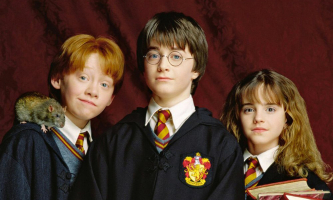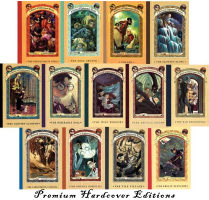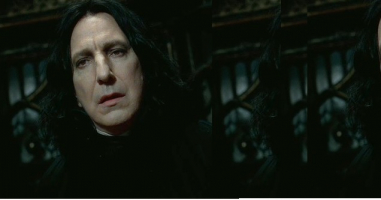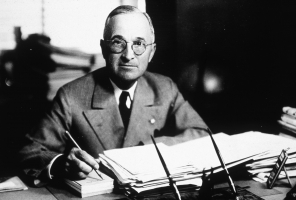Top 10 Coolest Spells in Harry Potter Series
In the Harry Potter universe, magic is of utmost importance. Some charms are helpful, others are defensive, and a few are just inexcusable. Here are ten of the ... read more...series’ most memorable spells.
-
The Disarming Spell (Expelliarmus) was a hex that caused anything an opponent held to fly out of his or her hand. This spell was often employed in duels to cause an adversary's wand to vanish.
The Disarming Charm's inventor is unknown. According to some wizarding histories, Merlin devised it, while others assert that it was first widely used in Africa in the 11th century. Even if some of these facts are true, it was not widely used until 1378, when Elisabeth Smudgling – the most probable originator, in Miranda Goshawk's view — employed it in a Dartmoor dueling event.
The Disarming Spell (Expelliarmus) became Harry Potter's trademark charm, and it was responsible for Lord Voldemort's death throughout the War of Hogwarts by bouncing back his Killing Curse. This occurred since the Elder Wand recognized Harry as its master via the spell connection, thereby strengthening the Disarming Spell to the point where Voldemort's final curse blew up on himself.
_
Effect: Disarming enemies
Light color: Scarlet
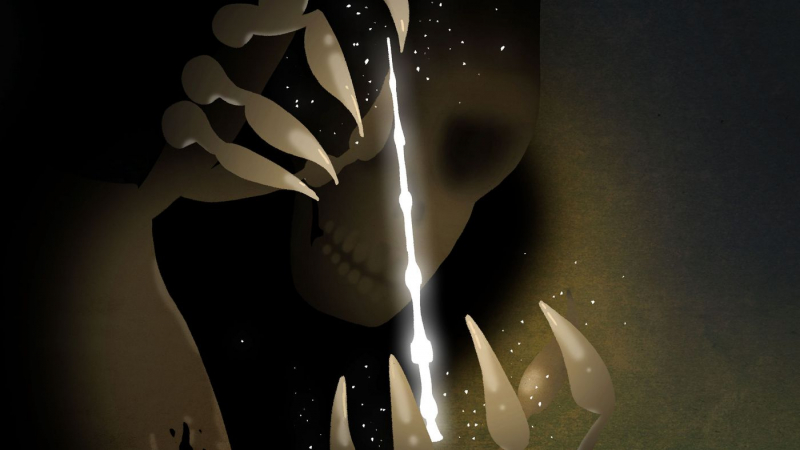
Source: The Ringer 
Source: WallpaperAccess -
Alohomora, often dubbed the Thief's Pal, was an enchantment that opened items including doors or windows. Additionally, it was capable of opening doors that had been sealed by the Sealing Spell (Colloportus), and so served as its counter-charm. The Anti-Alohomora Charm may be used to prevent the Alohomora Charm from functioning on a locked target. Numerous publications had descriptions of this spell, such as the first issue of the Standard Handbook of Spells series, which contained a chapter on it, and a spell book located in the Hogwarts Library. This magic was also taught in the first year of Hogwarts of Witchcraft and Wizardry Charms class and became one of the first spells pupils learned.
Harry Potter pondered using this spell to release the cage of his beloved pigeon Hedwig at number 4 Privet Drive in the summer months of 1992, but decided against it since he was aware that juvenile magicians and wizards were not permitted to conduct witchcraft outside of Hogwarts.
The door holding the Philosopher's Stone remained impenetrable to the Unlocking Charm; it could only be opened with a winged key. A solitary gate inside the Department of Mysteries is also immune to this spell; it is supposed to lead to the chamber in which the Ministry of Magic conducts research on the nature of love in the Division of Mysteries.
_
Effect: Unlocking things
Light color: Purple, yellow, blue, or invisible
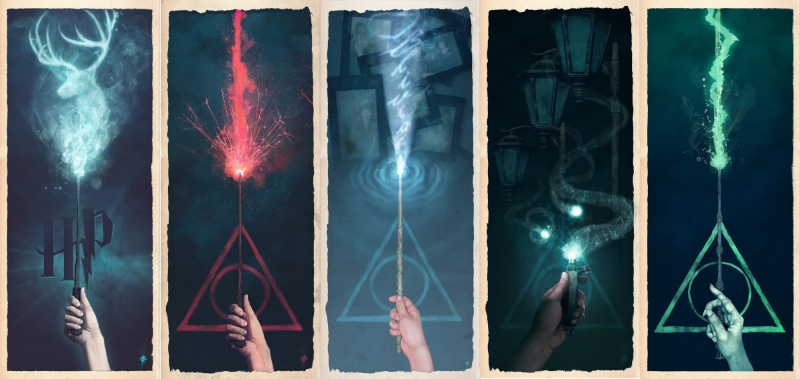
Source: Wallpaper Flare 
Source: SUWalls Desktop Wallpapers -
Lumos was a spell that lighted the point of the beholder's wand, enabling the mage to see clearly in the darkness. The Wand-Extinguishing Charms (Nox) have been used to snuff the glow from the caster's wand as a counter-charm for the spell.
The Wand-Lighting Charm (Lumos) was one of the simplest but most helpful light-creation spells. Its primary purpose was to generate a flame at the tip of the wand to aid with night vision. This light was rather warm, and if someone was negligent enough, they risked setting fire to combustible objects, even the caster's wand.
Wand light was also capable of repelling ghosts and other ghostly adversaries such as Gytrashes, who would flee. Additionally, the Wand-Lighting Magic was capable of illuminating and revealing magically concealed architectural features such as entrances. While the caster had to possess a wand to execute the charm, they did not need to wield it to light it. Yes, if the mage performed the charm while not clutching their wand, it would light up regardless of its distance from the caster.
_
Effect: Lighting up the wand’s tip
Light color: White
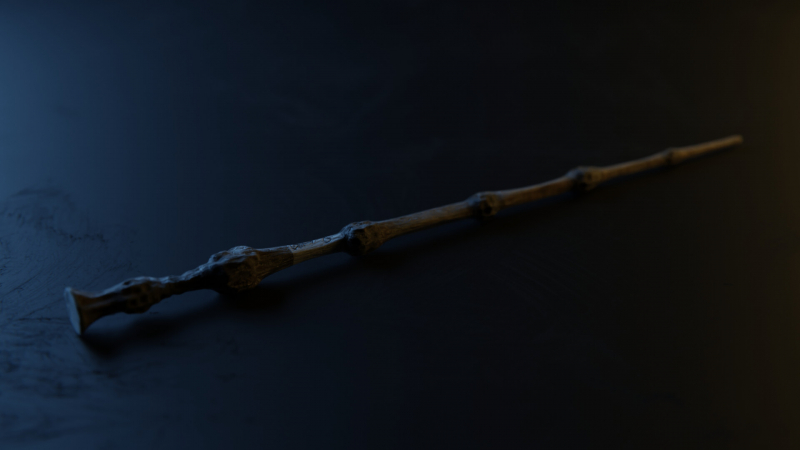
Source: Blender Artists 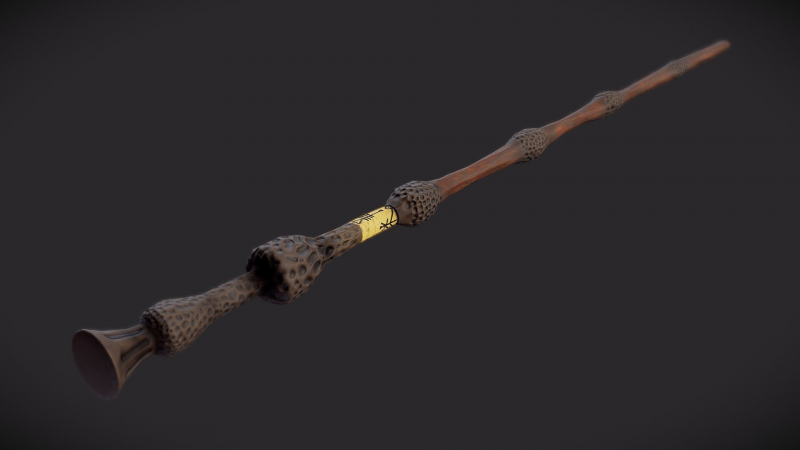
Source: Sketchfab -
The Killing Curse (spelled as Avada Kedavra) was among the 3 Unforgivable Curses and was a weapon of the Dark Arts. When the curse was successfully put on a live person or beast, it resulted in swift and quick death, without inflicting any bodily harm or evidence of violence. When the Killing Curse is cast, it is followed by a flash of light or spray of green signal and an audible rush.
The only known antidote to this spell was sacrificial safeguard, which relied on the strength of love. Due to the fact that the Killing Curse (Avada Kedavra) was a traditionally unavoidable curse, shield charms would be unable to protect against it. However, the green bolt may be avoided by using a physical barrier or Priori Incantatem. If the spell is cast on anything other than a live target, an explosion or fire may occur.
It is worth noting that, despite the curse's illegality, Aurors were permitted to employ violent means and all 3 Unforgivable Curses on foes throughout the First Wizarding War.
_
Effect: Killing enemies instantly
Light color: Green

Source: Cool wallpapers 
Source: Wallpaper Abyss - Alpha Coders -
The Total Body Curse (spelled as Petrificus Totalus), sometimes referred to as the Body Paralyzing Spell, was a hex that briefly paralyzed the opponent. It was often utilized in dueling by unskilled or youthful wizards and witches. This curse may be found in Vindictus Viridian's Curses and Counter-Curses. When applied to a live individual, the victim's limbs and thighs snapped together and he or she fell rigid as a board. However, the individual's ability to hear, see (although in a limited manner), feel, and think remained intact.
While the spell technically worked on inanimate things as well, its effects were often undetectable due to the object's lack of movement in the first place. The Full-Body Bind Curse's effects may be reversed with the help of the Universal Counter-Spell, the mending spell Episkey, an Anti-Paralysis Potion, or the Reparifors spell.
Despite the invocation, the Total Body Curse (Petrificus Totalus) was fundamentally distinct from petrification, a kind of sophisticated Dark Magic that cannot be undone with a simple counter-curse.
_
Effect: Freezing enemies temporarily
Light color: Purple, white

Source: teahub.io 
Source: Wallpaper Abyss - Alpha Coder -
Piertotum Locomotor is the invocation for a charm that was meant to breathe life into lifeless and immobile artifacts. The charm's caster may exert control over the target's movements. Minerva McGonagall used this spell to charm the Chessboard Chamber inside the Underground Chambers before the 1991–1992 scholastic year in order to secure the Philosopher's Stone. Molly Weasley also conducted this spell in 1994 to enchant a dustpan used to shovel potatoes from The Burrow's kitchen floor.
Albus Dumbledore turned to Piertotum Locomotor to activate the Waterfall of Magical Brethren monument during the Combat in the Ministry Atrium, with the animated statues shielding Harry Potter, immobilizing Bellatrix Lestrange, and deflecting Voldemort's Killing Curse.
Filius Flitwick applied this spell on 1 May 1998, during Severus Snape's ouster, to animate a set of armor that Snape was sheltering behind in order to overpower him. Minerva McGonagall then performed this charm to activate the Hogwarts capes and sculptures in preparation for the Second Wizarding War's climactic combat, the Battle of Hogwarts. The armor was employed to assist the Hogwarts defenders in their fight with Lord Voldemort, the Death Eaters, as well as the many Bad creatures that had joined with him.
_
Effect: Animating things
Light color: Green
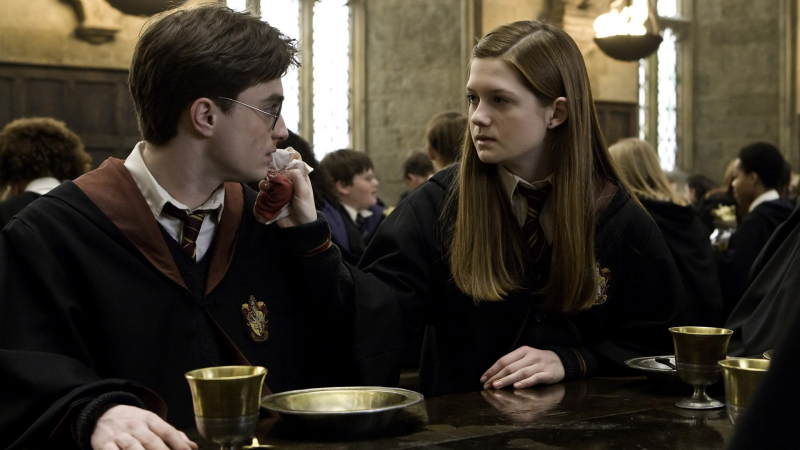
Source: Digital Citizen 
Source: WallpaperDog -
The Summoning Charm ( spelled as Accio) summoned an item toward the caster. It was capable of summoning items in the caster's direct line of sight as well as those that were not visible, just by addressing the object loudly after the invocation (unless it was cast wordlessly). This spell required thinking, and the caster's mind must be clear on the thing before attempting to call it. Accio's polar opposite is the Banishing Charm.
Accio was not intended to be employed on structures. Additionally, it would not act on living creatures, but they may be influenced indirectly via the summoning of objects they were donning or carrying. It was dangerous to call them in this fashion, since they traveled extremely fast and may be wounded in the process. Only Flobberworms were known to be an exception to this rule, since they were typically deemed unworthy of summoning.
The greater the distance between the caster and the targeted item, the more difficult it was to conjure. Hermione Granger, on the other hand, remarked that it was irrelevant how far away the item was – as long as the mage had it firmly in mind, they ought to be able to conjure it without difficulty. Additionally, the overall position of the item must be known; otherwise, it cannot be summoned.
_
Effect: Summoning objects
Light color: None

Source: WallpaperAccess 
Source: WallpaperSafari -
The Memory Charm (Obliviate), sometimes referred to as the Mental fogginess Charm, was a spell whose usage completely wipes certain memories from a person's memory. It was distinct from the charms that induced erroneous recollections.
Generally, Memory Charms (Obliviate) were designed to obliterate a certain memory. They were often employed when a Muggle encountered anything linked to the wizard's world or magic in nature; the Ministry of Magic ordered Obliviators to erase memories of such events, like when a Muggle saw some dragons. At times, like as the Ilfracombe Incident, widespread employment of Memory Charms was essential to conceal important happenings that broke the Statute of Secrecy.
As per Blenheim Stalk in Muggles Who Notice, some Muggles did fall between the cracks in these instances. When extremely vivid memories were to be wiped, the victim was often left confused for a brief while, as was the case with the Robert family after the 1994 Quidditch World Cup.
_
Effect: Erasing memories
Light color: Green
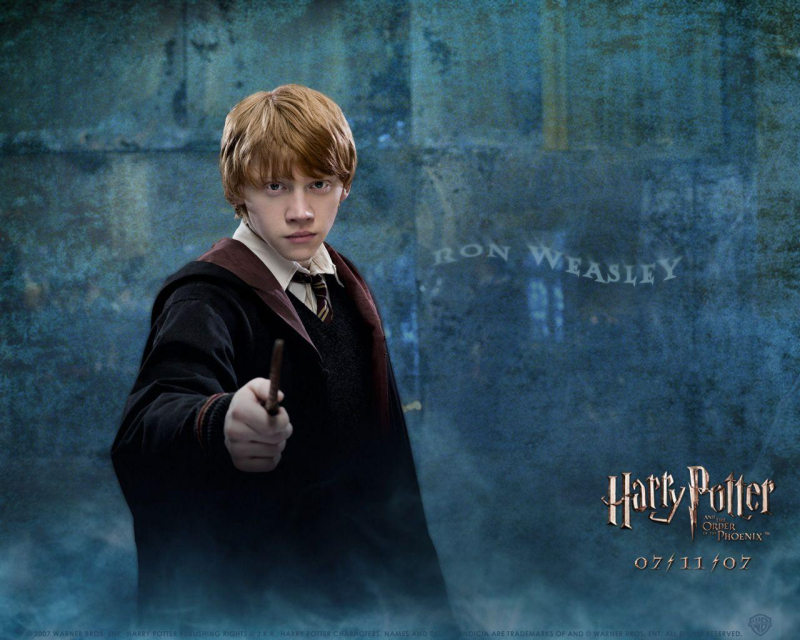
Source: Wallpaper Crave 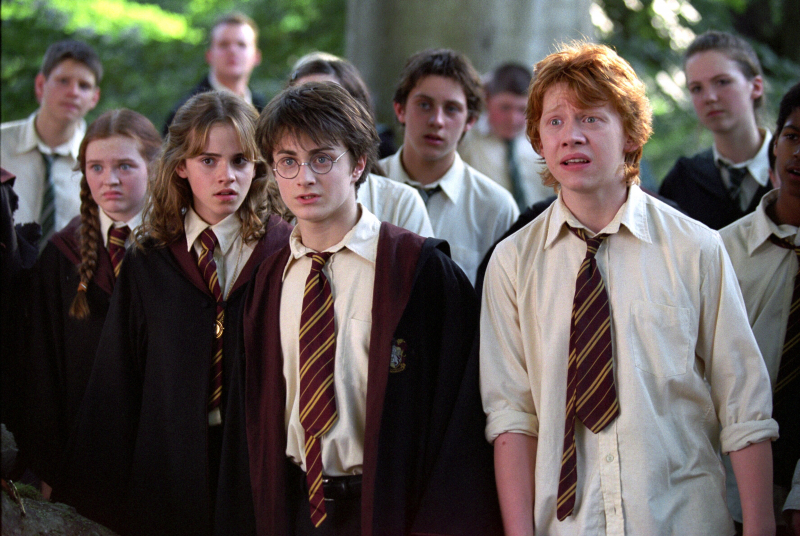
Source: Mocah Wallpapers -
Sectumsempra was a hex created by Prof Severus Snape which lacerated the victim and resulted in significant bleeding. Snape invented it as a Hogwarts student with the goal of deploying it against his adversaries, most likely the Marauders. It developed into one of his specialties. It is unclear when Severus Snape created this spell, although Sirius Black did mention that Snape "learned more curses than half the seventh-year students when he came to school."
Minor wounds produced by this curse may be treated with the song-like chant Vulnera Sanentur. The first invocation lessened blood circulation, the second made the wounds mend, and the third eliminated the curse's worst effects. The person would still need medical care, and scarring may be minimized if dittany is administered soon.
While the stated healing spell and spirit of dittany may well have cured the wounds and avoided scarring, any bodily parts cut by Sectumsempra could not be regrown (a characteristic of black magic's lasting effects), as George Weasley proved when he sacrificed his left ear after receiving the spell.
_
Effect: Lacerating enemies
Light color: White

Source: Wallpaper Crave 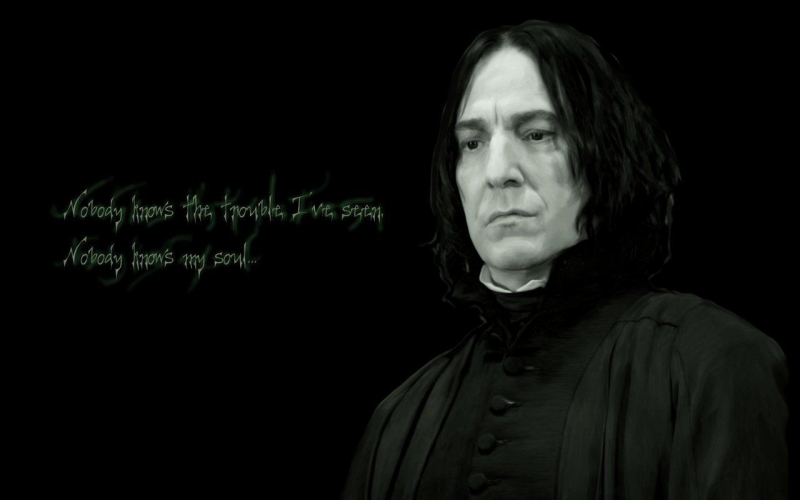
Source: WallpaperDog -
The Patronus Charm (or Expecto Patronum) was one of the most well-known and strong protective charms revealed to wizardkind. It was an enormously complex and difficult ritual that summoned a somewhat palpable good energy force described as a Patronus and spiritual protector. It provided the principal defense versus Lethifolds and Dementors, against whom no other defenses existed.
The Patronus embodied everything that was concealed, unknown, yet essential inside the individual. When a human is faced with an inhumane evil, such as a Dementor, he or she must call upon resources they may never have required. Patronus, awakened by Expecto Patrum, was a hidden self that had lain dormant until needed, but must now be laid bare.
Patronuses take on shapes that their casters were not expecting, for whom they had never experienced an attachment or even recognized (in rare situations). Each Patronus was as distinct as its maker, and even fraternal twins were known to create Patronuses that were very different.
_
Effect: Summoning spiritual guardians
Light color: Silver
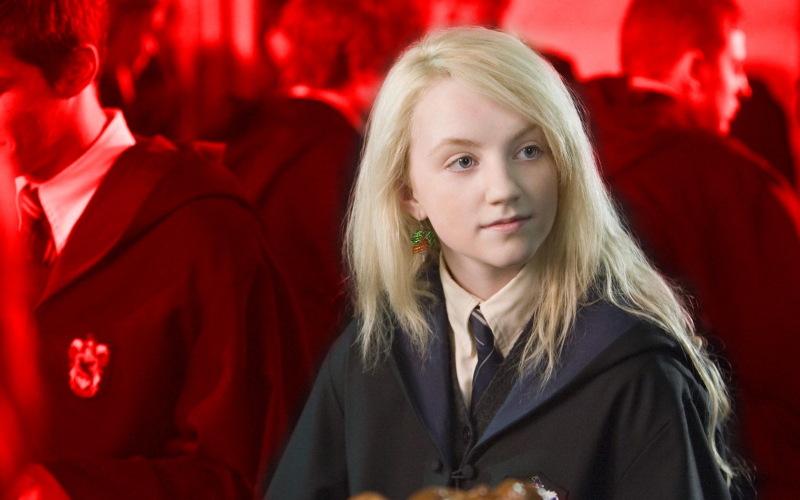
Source: Wallpaper Abyss - Alpha Coders 
Source: Cool Wallpapers













